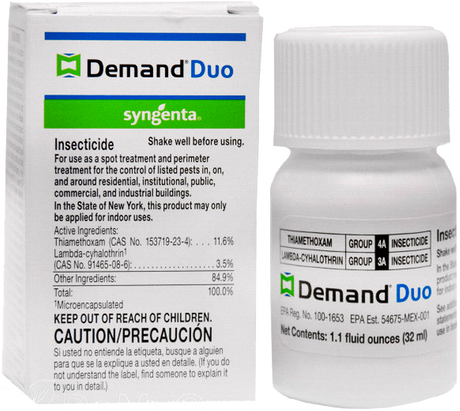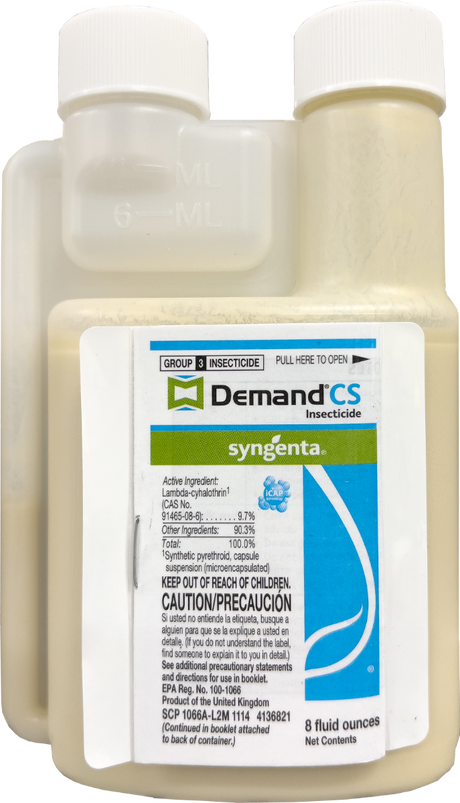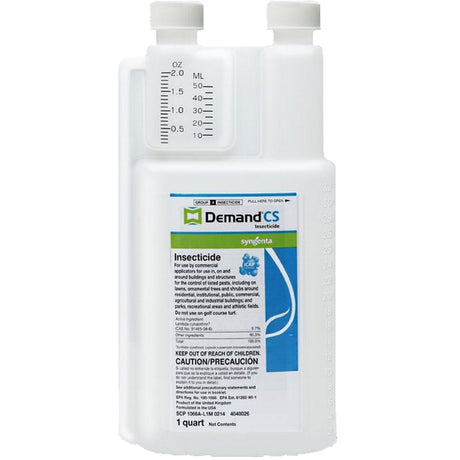Safety Products
General Pest Prevention
Identify
Inspect
Treat
Prevent
How to Prepare Your Home for Pest Prevention
For homeowners and business owners alike, employing proactive pest prevention measures is crucial to avoid infestations, which are more costly and challenging to manage than maintaining routine prevention. This guide offers strategies to keep your structure and property pest-free. Should you encounter pests, our guides on identifying and treating common household pests are available to assist you.
Sanitation
Maintaining cleanliness is essential in reducing the likelihood of pests setting up residence near or inside your home. Effective sanitation involves more than just cleaning up food spills; it requires modifying the environment to deprive pests of their necessities: food, water, and shelter.
Tips on How to Sanitize Your Home Against Pests
- Trim back tree branches and shrubs to prevent them from touching your home and to allow more sunlight onto your lawn, which helps reduce moisture.
- Keep bushes and shrubs well-trimmed to eliminate hiding spots for small animals, snakes, and insects.
- Pull back mulch, pine straw, and other landscaping materials at least six inches from your structure to create a less appealing barrier for pests.
- Avoid overwatering your garden or lawn. Aerate your lawn to improve drainage in moist areas.
- Clean gutters and downspouts regularly to prevent pests from nesting.
- Mow your lawn regularly to keep grass short and less hospitable to pests.
- Remove yard debris like grass clippings, leaf piles, and stacked wood to reduce pest hiding spots.
- Store outdoor trash cans and dumpsters away from your structure with tightly fitting lids.
- Clean trash containers regularly with an ammonia-based solution to minimize odors and bacteria.
- Vacuum frequently inside your home, store food in sealed containers, and keep areas free of crumbs.
Exclusion
After making your home and yard unwelcoming to pests through sanitation, the next step is to physically prevent pests from entering.
Exclusion Tips to Prevent Pest Entry:
- Repair or replace any damaged or missing window and door screens.
- Update old or absent weather stripping and door sweeps.
- Fill cracks, gaps, and openings in your structure using materials like Stuf-Fit copper mesh, Xcluder cloth, expanding foam, caulk, or hardware cloth.
- Fix or replace any broken or missing vent covers.
If pests are already present in or around your home, learn how to identify entry points and apply DIY pest control treatments with our comprehensive pest prevention guide.
Recommended Products
By following these steps, you can effectively prevent pests from becoming a problem in your home, saving time and money on potential future infestations. For more detailed advice, visit the Pest Control Superstore's website or contact our expert team for assistance.
How to Conduct a Free Home Pest Inspection
Overview
Save hundreds annually by performing your own quarterly home pest inspections. Learn to identify common pest hotspots around your property and potential entry points to your home with this guide. Keep a close eye on these areas during your walk-through to prevent minor pest issues from escalating into major infestations. Acting quickly is crucial, especially with pests like termites and bed bugs.
Follow our simple three-step DIY pest inspection guide below. If you suspect a pest presence, our general pest prevention treatment guide can help you take proactive measures before an infestation becomes overwhelming.
Step1 Inspect Your Property for Potential Risks
Begin your pest inspection by identifying areas around your home that may attract pests. As you examine your property’s perimeter, consider the following:
- Are there any tree branches or shrubs touching your structure?
- Is there dense or tall vegetation on your property?
- Do you have mulch or pine needles near your building?
- Are there overly moist areas or standing water?
- Are your gutters clogged or obstructed?
- Is there yard debris such as leaf piles, wood piles, or grass clippings?
Addressing these problem areas is essential to mitigating the risk of pest infestations.
Step2 Identify Entry Points for Pests
After inspecting the exterior, check your home’s interior spaces such as the attic, basement, crawlspace, and main living areas for potential entry points. Focus on:
- Torn or missing window screens
- Large cracks or gaps in the foundation or around windows and doors
- Loose or damaged weather stripping and door sweeps
- Gaps around cables, pipes, and wires that enter the structure
- Missing or damaged vent covers
Sealing these entry points can significantly reduce the likelihood of pests entering your home.
Step3 Look for Signs of Active Pests
Identifying active pests on your property allows you to choose the correct treatment plan. During your inspection, look for:
- Signs of disturbance such as soil mounds, chewed structures, or nesting materials
- Animal droppings around or within your home or in crawl spaces
- Actual sightings of animals or insects on your property or inside your home
If you notice any of these signs, it is likely that you have a pest problem.
By regularly inspecting your home and addressing potential risks, you can maintain a pest-free environment. For more detailed guidance on pest control, visit the Pest Control Superstore's website or contact our expert team for advice.
Preventive Pest Control Treatment Plan
Overview
Preventing a pest infestation is far more cost-effective and simpler than managing one once it has begun. Using insecticides and rodenticides can significantly decrease the pest population around your home and deter them from attempting to enter. However, these products must be part of a broader approach that includes diligent home and yard sanitation as outlined in our guide to preparing your home for pest prevention.
Discover how and how often you should treat your home for insects and rodents below.
DIY Insect Prevention Treatment
We suggest applying a liquid insecticide around the perimeter of your home or building every 90 days. In areas with high pest populations or during seasons of intense heat, monthly treatments may be necessary.
Recommended Products
Integrated Pest Management (IPM)
For both indoor and outdoor applications, mix a liquid insecticide in a hand-pump sprayer according to the product label's recommended ratio. Always wear protective gear such as long sleeves, goggles, and gloves during application.
Key Application Areas for Insecticides:
- Apply 3 feet up the foundation and 1 foot out onto the ground from the structure.
- Treat around entry points such as where cables, pipes, and wires enter the structure.
- Include door frames, window frames, vents, and soffits.
- Focus on any areas where pests have been previously active.
To monitor potential indoor pest activity, place glue board traps in cabinets, under appliances, and storage areas like closets, garages, and attics.
For optimal protection, use both liquid insecticides and insecticide dust.
Pro Tip
During periods of high heat or frequent rain, the effectiveness of liquid insecticides can diminish. Augment your treatment with InTice 10 perimeter bait, a superior bait with boric acid that withstands UV rays, heat, and moisture. Apply a 2-3 foot band around your home’s exterior, avoiding areas where you have sprayed insecticide. One pound covers approximately 1,000 square feet and lasts about 90 days.
DIY Rodent Prevention Treatment
Preventing rodent infestations is crucial as they are particularly challenging to eliminate once established. We recommend setting up rodent bait stations around the exterior of your home or business.
Setting Up Rodent Bait Stations:
- Place bait stations at every corner of your structure, near all entry doors, and by the garage.
- Inspect and refill the bait stations every two weeks, especially during spring and fall when rodent activity increases.
Recommended Products
Pro Tip
If unsure about which size bait station to use, opt for rat-sized stations as they accommodate both rats and mice, whereas mouse-sized stations exclude rats.
Secure your bait stations to patio blocks to prevent them from being moved by larger animals and to keep them dry. Apply caulk adhesive to a patio block, set a bait station on it, and allow the adhesive to cure for 24 hours before moving the station-setup.
The most effective strategy to manage pests is preventing them before they start. Utilize integrated pest management techniques detailed in our guide to implement small, impactful measures that prevent costly infestations. For more pest control insights, visit Pest Control Superstore or contact our expert team.
How to Prevent Pest Infestations
Overview
Integrated Pest Management (IPM) is a comprehensive approach that focuses on preventive and monitoring strategies to manage pests effectively while minimizing the use of chemicals. The main goal of IPM is to proactively prevent pest infestations, enhancing environmental health by reducing the need for pesticides. This approach is also known as general pest prevention.
At Pest Control Superstore, we have crafted a four-part guide to Integrated Pest Management to assist you in preventing pest infestations using minimal products. For more detailed guidance, consider exploring our related guides on preparing your home for pest treatment, identifying pests, and performing your own pest control treatments.
Step1 Integrated Pest Management Essentials
If you’re battling common household pests such as ants, cockroaches, fleas, spiders, and rodents, or looking to prevent future infestations, adopting an IPM program can greatly benefit your home or business.
Products we recommend for Step 1
What is Integrated Pest Management? (IPM)
As outlined in our guide on preparing your home for pest treatment, many pest issues can be effectively managed by altering the environment where infestations occur. For example, consistent trapping of rodents may indicate easy entry points into your home, such as low-hanging branches or open windows. Addressing these entry points can significantly reduce rodent populations.
Effective Strategies to Prevent Pest Infestations:
- Clean out clogged gutters to prevent water accumulation.
- Trim bushes and trees to ensure they do not touch your home, reducing access for pests.
- Remove heavy mulch build-up which can harbor pests close to your foundation.
- Manage your property’s irrigation system to avoid excessive moisture.
- Utilize sticky traps and live catch traps to monitor and control pest activity.
- Eliminate any moisture accumulation near your foundation.
- Seal off entry points for pests, including gaps under garage doors, around windows, and at cable or wire entry points.
- Declutter indoor areas, particularly in basements, attics, crawl spaces, and garages, to remove potential pest harborage sites.
- Maintain cleanliness and sanitation in and around your property.
- Store firewood off the ground and away from your home to discourage pest harborage.
Insecticide Application
For optimal protection, apply insecticides monthly around your structure from early August through November (or until the first frost). Resume treatments after the frost thaws in the spring. Always use the highest recommended usage rate for applications. The primary objective is to prevent overwintering pests from entering your home or building.
We trust that our four-part general pest prevention guide provides you with the tools you need to maintain a pest-free environment. Remember, implementing sanitation and exclusion practices, conducting your own pest inspections, and managing pest control treatments can save you time and money while preventing infestations. If you think you might have a pest problem, don't hesitate to contact our pest experts at Pest Control Superstore for professional advice.



















